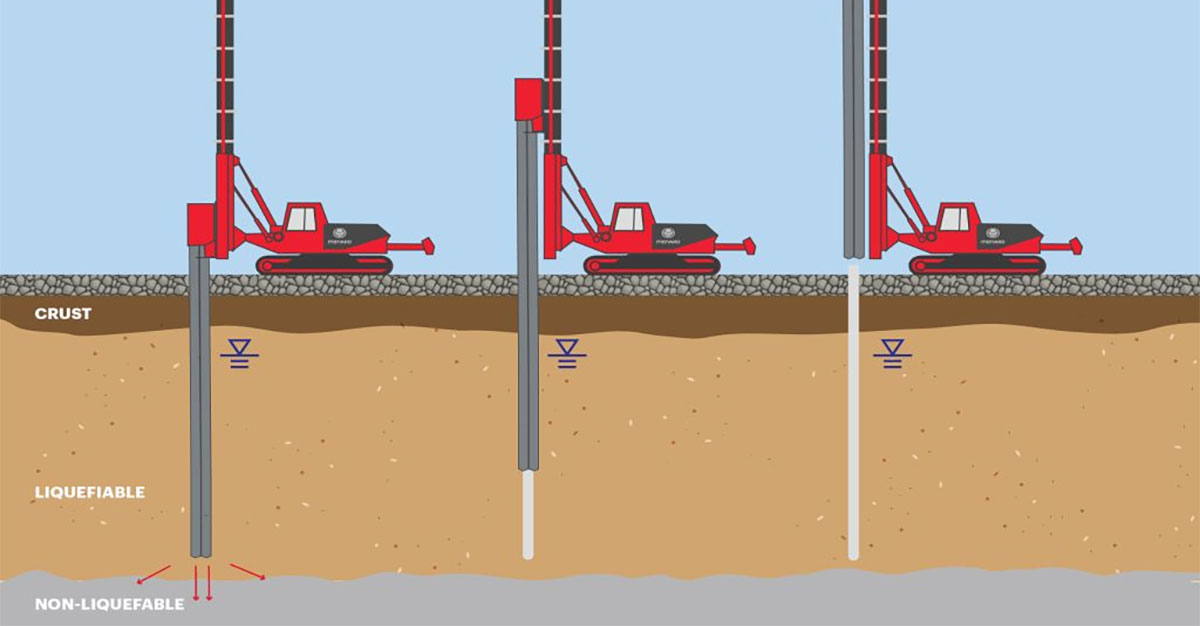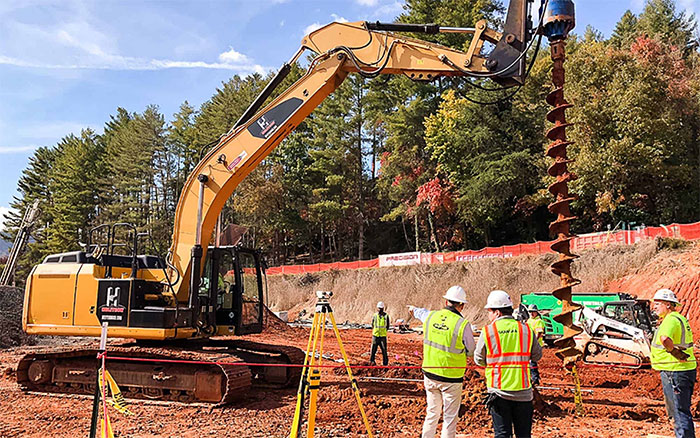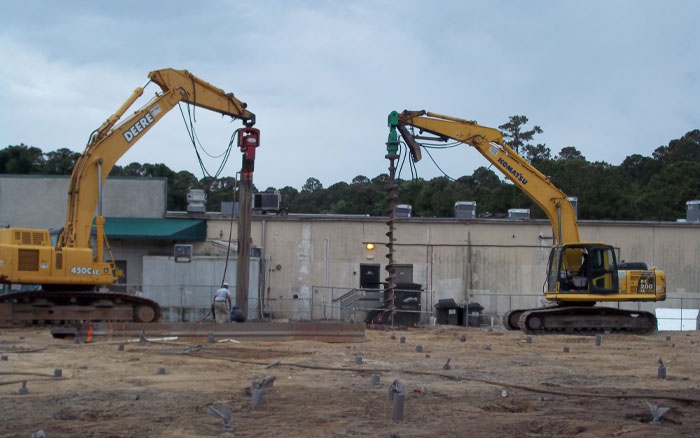
Discover how earthquake drains revolutionize seismic resilience, offering a crucial defense against liquefaction risks and safeguarding infrastructure in earthquake-prone areas.
What are earthquake drains?
Earthquake drains, are a type of infrastructure designed to reduce the impact of earthquakes on buildings and other structures. These drains are typically installed in the ground beneath buildings and are intended to absorb seismic energy during an earthquake, thereby mitigating the transmission of seismic forces to the structure above.
The basic principle behind earthquake drains involves using a combination of materials and mechanisms that allow for controlled movement and dissipation of seismic energy. This can include features such as flexible pipes, elastomeric bearings, or sliding plates that allow the building to move independently of the ground motion during an earthquake.
By installing earthquake drains, engineers aim to protect structures from damage caused by the shaking and shifting of the ground during seismic events. This can help prevent structural collapse, reduce the risk of injury or loss of life, and minimize the need for costly repairs following an earthquake.
How earthquake drains work?
Earthquake drains are a specific type of drainage system designed to mitigate the effects of liquefaction during an earthquake. Liquefaction is a phenomenon that can occur in loose, saturated soils during an earthquake, where the soil temporarily loses its strength and behaves like a liquid. This can result in significant damage to buildings, infrastructure, and the surrounding environment.
Here’s how earthquake drains work:
- Design and Installation: Earthquake drains are typically installed in areas with high liquefaction risk, such as near bodies of water or in loose, sandy soils. They consist of vertical or slanted pipes or wells that are embedded deep into the ground beneath structures.
- Perforations or Filters: These pipes are designed with perforations or filters to allow water to flow into them easily. The goal is to provide a pathway for water to escape from the soil, preventing it from becoming overly saturated and losing its strength during an earthquake.
- Gravity Drainage: The drainage system relies on gravity to draw water away from the surrounding soil. When an earthquake occurs, the shaking can cause water to rise up from the saturated soil into the drainage pipes. The pipes then provide a conduit for the water to flow vertically or laterally away from the site, relieving pressure on the soil and reducing the risk of liquefaction.
- Prevention of Soil Liquefaction: By removing excess water from the soil, earthquake drains help to maintain its stability and prevent liquefaction from occurring or minimize its effects. This can significantly reduce the risk of damage to buildings, infrastructure, and other structures built on or near liquefiable soils.
Earthquake drain installation
The installation of earthquake drains involves several key steps to ensure their effectiveness in mitigating liquefaction risk during seismic events. Here’s an overview of the typical installation process:
- Site Assessment and Design: Before installing earthquake drains, engineers conduct a thorough assessment of the site to determine the extent of liquefaction risk and identify suitable locations for drainage systems. This assessment may include soil testing, geological surveys, and analysis of seismic hazard maps.
- Selection of Drainage System: Based on the site assessment, engineers select the appropriate type of earthquake drain system for the specific soil conditions and liquefaction risk factors. This may include vertical or slanted drainage wells, perforated pipes, or other types of drainage structures.
- Excavation: Once the design is finalized, excavation begins at the designated locations for installing the earthquake drains. Excavation depths may vary depending on the depth of the liquefiable soil layers and the required drainage capacity.
- Installation of Drainage Pipes or Wells: The earthquake drains are installed in the excavated areas according to the design specifications. This may involve placing perforated pipes vertically or at an angle to facilitate water drainage from the surrounding soil. The pipes are typically surrounded by gravel or aggregate to promote water flow.
- Connection to Drainage Outlets: The drainage pipes or wells are connected to outlet structures that allow water to flow away from the site. This may involve connecting the drains to existing stormwater drainage systems, natural watercourses, or other suitable discharge points.
- Backfilling and Compaction: Once the drainage system is installed, the excavated areas are backfilled with suitable fill material and compacted to ensure stability and support for the structures above. Care is taken to avoid damage to the drainage pipes during backfilling.
- Testing and Monitoring: After installation, the earthquake drains are tested to ensure they are functioning properly and effectively draining water from the soil. Monitoring systems may also be installed to continuously monitor water levels and soil conditions to detect any potential issues or changes over time.
- Maintenance and Inspections: Regular maintenance and inspections of the earthquake drains are essential to ensure they remain in good working condition and continue to mitigate liquefaction risk effectively. This may include periodic cleaning, repairs, and adjustments as needed.
What are the applications of earthquake drains?
Earthquake drains are primarily used in areas prone to liquefaction, a phenomenon that can occur during seismic events in loose, saturated soils. Here are some key applications of earthquake drains:
- Urban Infrastructure: Earthquake drains are commonly used in urban areas where liquefaction poses a significant risk to buildings, roads, bridges, and other critical infrastructure. By mitigating the effects of liquefaction, these drains help to safeguard urban environments and reduce the potential for damage and disruption during earthquakes.
- Building Foundations: In regions with high liquefaction risk, earthquake drains may be installed beneath building foundations to prevent soil liquefaction from compromising the structural integrity of buildings. This application helps to enhance the resilience of buildings against seismic events and protect occupants from harm.
- Transportation Networks: Earthquake drains are also employed in transportation networks, such as highways, railways, and airports, to prevent liquefaction-induced settlement or instability of roadbeds and railway tracks. By maintaining the stability of transportation infrastructure, these drains contribute to the safety and reliability of transportation systems during earthquakes.
- Critical Facilities: Critical facilities, such as hospitals, emergency response centers, power plants, and water treatment facilities, often utilize earthquake drains to safeguard their operations and functionality during seismic events. These drains help to ensure the continued operation of essential services and minimize disruptions to emergency response efforts.
- Residential Areas: In residential areas located in liquefaction-prone regions, earthquake drains can be installed to protect homes and neighborhoods from the effects of soil liquefaction. This application helps to enhance the safety and resilience of residential communities and reduce the risk of property damage and loss during earthquakes.
- Infrastructure Retrofitting: In existing structures and infrastructure, earthquake drains may be retrofitted to improve their resilience to seismic events. Retrofitting with earthquake drains can help to strengthen vulnerable areas and reduce the risk of liquefaction-related damage without the need for extensive reconstruction.
The advantages of using earthquake drains
The use of earthquake drains offers several advantages in mitigating the risks associated with liquefaction and enhancing the resilience of structures and infrastructure during seismic events. Some of the key advantages include:
- Liquefaction Mitigation: Earthquake drains help to prevent or mitigate soil liquefaction by providing a pathway for excess water to drain away from the soil. By reducing the buildup of pore water pressure within the soil layers, these drains help maintain soil stability and prevent loss of bearing capacity, thereby minimizing the risk of settlement, tilting, or lateral spreading of structures.
- Protection of Infrastructure: By reducing the effects of liquefaction, earthquake drains protect critical infrastructure such as buildings, roads, bridges, and utilities from damage or failure during earthquakes. This helps to maintain the functionality and operational continuity of infrastructure networks, ensuring the safety and well-being of communities.
- Enhanced Structural Resilience: The installation of earthquake drains beneath building foundations or infrastructure elements improves the seismic resilience of structures by reducing the dynamic loads transmitted to them during seismic events. This can lead to less structural damage, lower repair costs, and reduced downtime for repairs and reconstruction following earthquakes.
- Cost-Effectiveness: Compared to other liquefaction mitigation measures, such as deep soil stabilization or ground improvement techniques, earthquake drains can be a cost-effective solution for addressing liquefaction risks, particularly in areas with high groundwater levels or loose, saturated soils. The relatively low installation and maintenance costs make earthquake drains an attractive option for enhancing seismic resilience in various settings.
- Versatility and Adaptability: Earthquake drains can be designed and installed in a variety of settings and configurations to suit the specific requirements of different projects and environments. They can be integrated into new construction projects or retrofitted into existing structures and infrastructure, offering flexibility in addressing liquefaction risks across a range of applications.
- Environmental Sustainability: The use of earthquake drains promotes sustainable development practices by minimizing the environmental impact of liquefaction mitigation measures. By managing groundwater levels and reducing the need for extensive soil stabilization or excavation, earthquake drains help to preserve natural habitats and ecosystems while enhancing the resilience of human-made infrastructure.
Conclusion
In conclusion, earthquake drains offer a cost-effective, versatile, and environmentally sustainable solution for mitigating liquefaction risks, protecting infrastructure, and enhancing structural resilience during seismic events. Their ability to efficiently drain excess water from soil helps to minimize the impact of earthquakes, making them a valuable asset in promoting the safety and resilience of communities in earthquake-prone regions.






